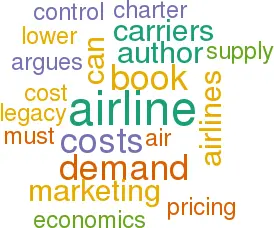Book review: Flying Off Course – Airline Economics and Marketing
April 2010


Professor Doganis has produced the fourth edition of his classic book on airline economics. The theme of this book is that for individual airlines, financial success depends on matching supply and demand in a way which is both efficient and profitable.
The problem is that while airline managements have considerable control over the supply — that is, the nature of services they offer — they have relatively little control over the demand for those services. They can influence demand but they cannot control it. It is because of this that the process of matching supply and demand is so dynamic and unstable.
The book focuses initially on how different factors influence airline costs and the degree to which such factors can be controlled or influenced by management. An innovation is an analysis of the low–cost model, explaining how easyJet can produce seat–mile costs 40% or more lower than those of legacy carriers operating on the same routes, while Ryanair’s costs may be up to 60% lower.
While the cost gap is closing as the legacies cut their costs and adapt to new realities, the author argues that the well–run low cost carriers will continue to have a 15–25% unit cost advantage over the most efficient network carriers.
The author also examines a much neglected topic in the aviation literature – the charter sector, which still generates 15- 20% of intra–European air traffic. The short–haul charter airlines, integrated into inclusive tour companies, have been badly hit both by the growth of LCCs and by the changing travel patterns associated with the internet and the desire for more independent holidays. While the author shows that the charter model can produce lower seat–mile costs, he argues that its survival depends on offering passengers greater flexibility and choice than has been the case in the past.
Turning to air cargo, the global cargo alliances set up by legacy carriers have not really worked according to the author, who argues that to succeed they must launch a common portfolio of products with common brands in all markets; they must integrate their IT systems; they must also develop standard handling processes and harmonised service standards; and they need to integrate their sales teams and marketing efforts.
The second half of the book focuses on airline marketing, that is the demand side of the equation, dealing with product planning and pricing and analysing the impact that LCCs have had on changing traditional airline pricing structures. A la carte pricing by airlines such as Aer Lingus and Air Canada is assessed, and the financial results found questionable. It appears that in trying to simplify fares some legacy airlines may have ended up with even more complex fare structures.
The new “Flying off Course” is again well written and illustrated with real examples and case studies. Rigas Doganis has again succeeded in giving an insider’s lucid view of the economics and marketing of the airline industry.